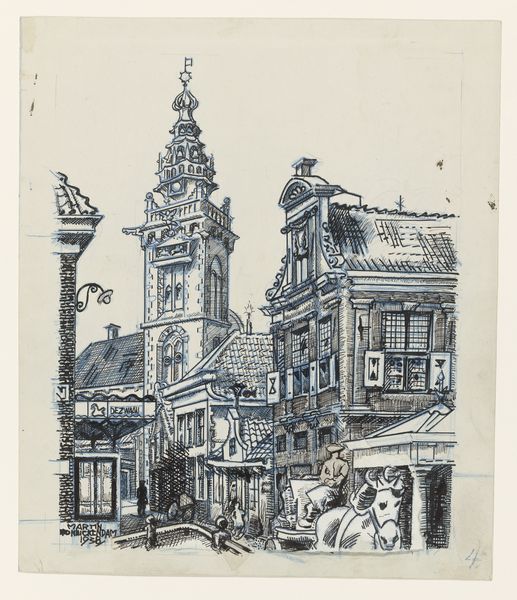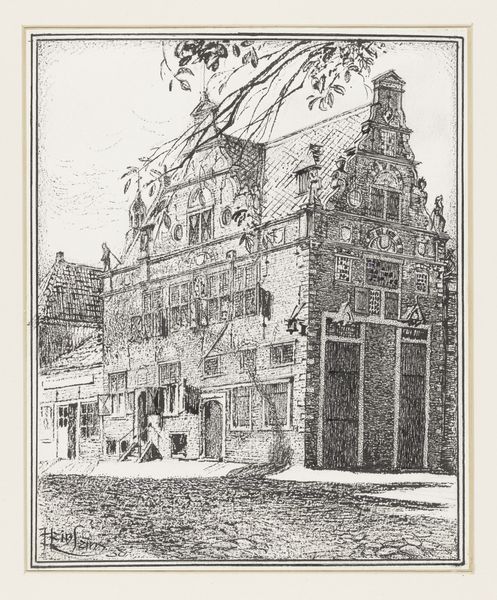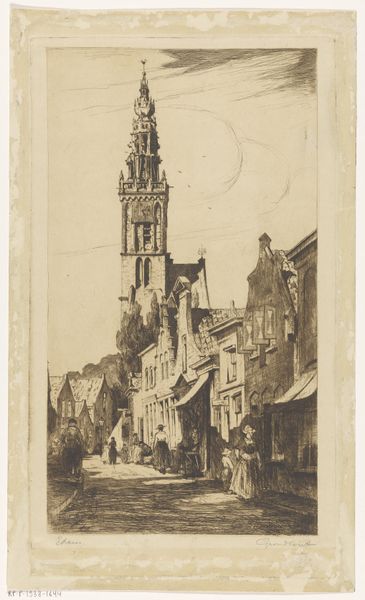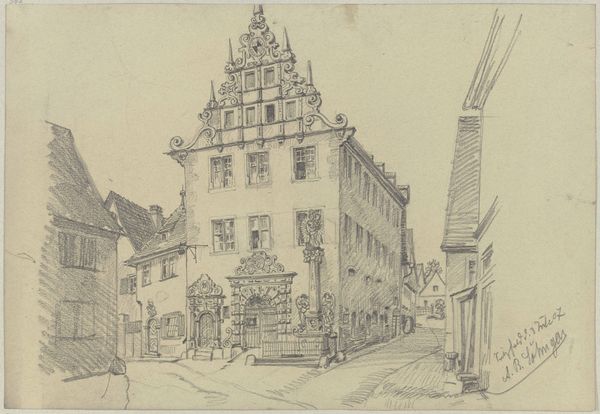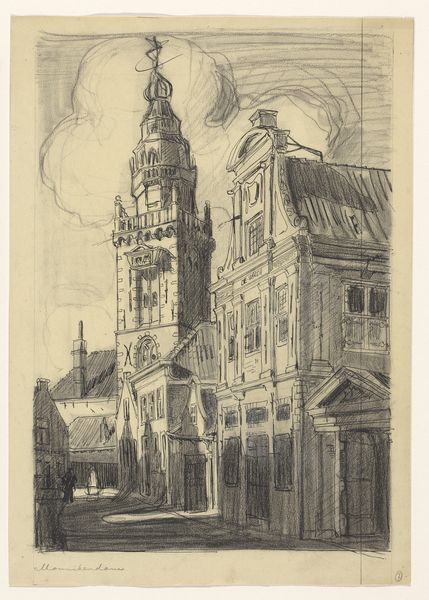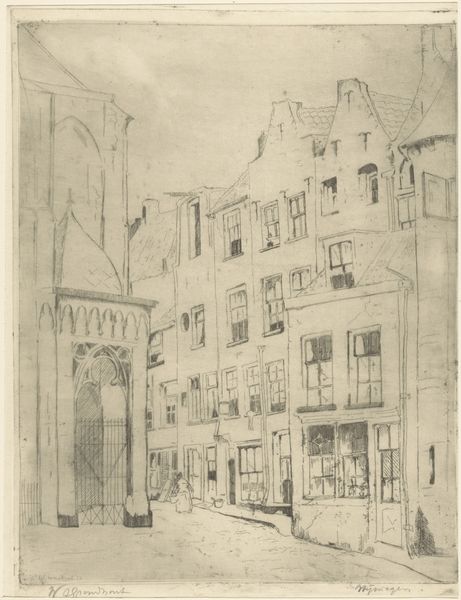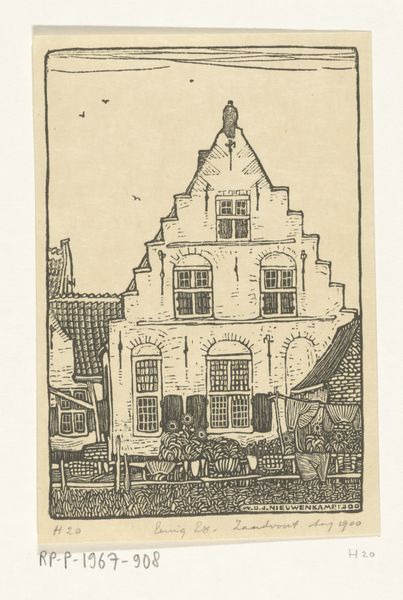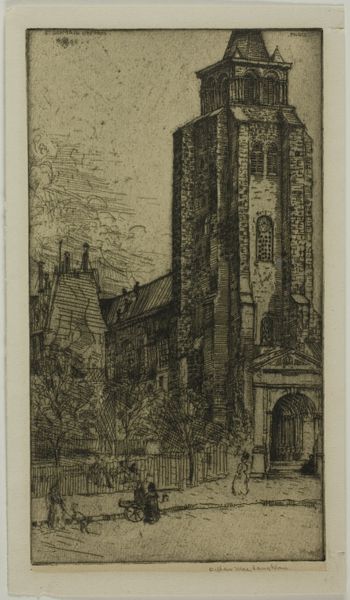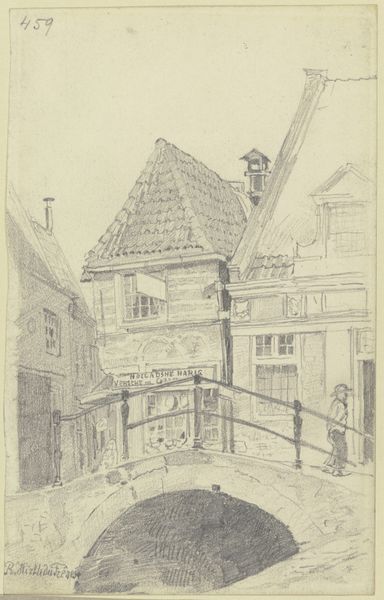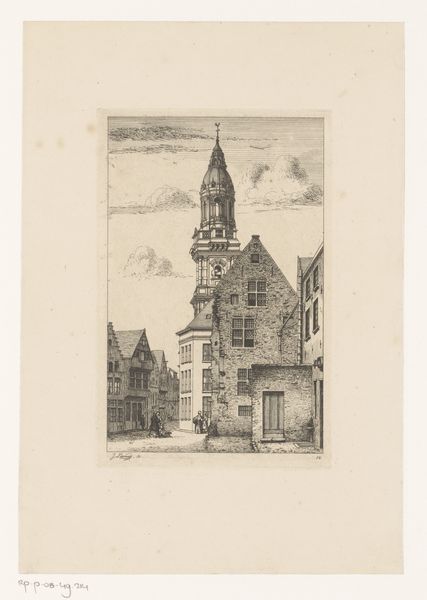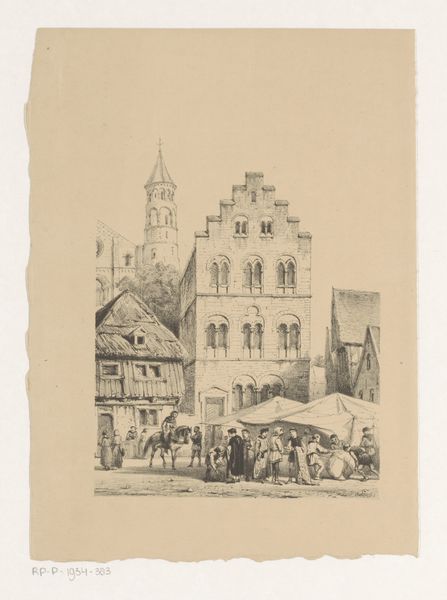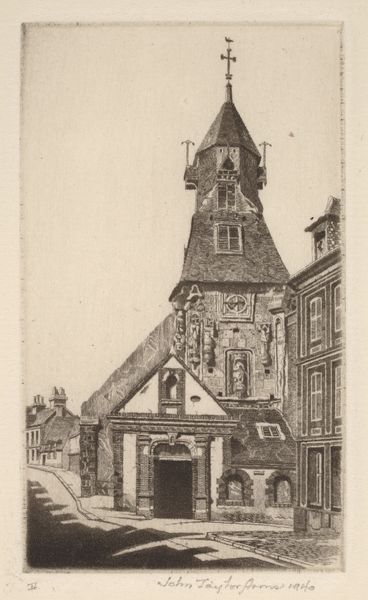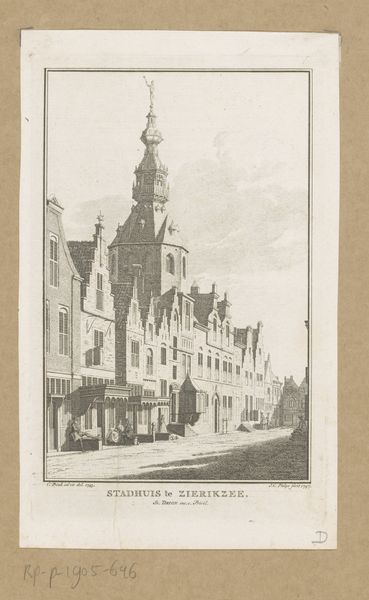
drawing, ink, pen
#
drawing
#
aged paper
#
quirky sketch
#
dutch-golden-age
#
sketch book
#
personal sketchbook
#
ink
#
sketchwork
#
geometric
#
pen-ink sketch
#
line
#
pen work
#
sketchbook drawing
#
pen
#
cityscape
#
storyboard and sketchbook work
#
sketchbook art
Dimensions: height 234 mm, width 166 mm
Copyright: Rijks Museum: Open Domain
Curator: What a fascinating peek into the past! This ink and pen drawing, titled "Speeltoren en Waag te Monnickendam," was created by Wijnand Otto Jan Nieuwenkamp sometime before 1897. Editor: My initial reaction? There's a compelling simplicity to this piece, yet also an incredible amount of detail in the linework that hints at something more than just surface representation. Curator: Absolutely. Monnickendam, even in the late 19th century, carried a heavy weight of social hierarchy—represented here visually, I think. The imposing tower overshadows the dwellings. How does the drawing reinforce existing power structures? Editor: That’s an interesting way to view it. From a materialist perspective, I am drawn to how Nieuwenkamp uses the humble pen and ink to evoke textures - the weathered stone, the aged paper. The technique speaks to a deliberate and efficient use of available tools, emphasizing craft. The way the image fades and becomes blurred hints at age too. It suggests value comes with the passage of time. Curator: Yes, the deliberate simplicity is deceptive. The pen and ink almost flatten the scene, creating a shared plane—a dialogue. Think about what was left OUT. Where are the markers of modernity? Does Nieuwenkamp want the viewer to question the idealized versus the experienced? Is that what this work suggests? Editor: The hatching and cross-hatching create a network of lines, like woven fabric that connects everything, right down to the shadows. Did Nieuwenkamp choose his viewpoint deliberately? By showing how structures fit together with light, it reveals to the audience how people worked, in concert with nature. Curator: Indeed, the interplay of light and shadow. But what story are those buildings trying to tell us. I like that your thoughts touch upon how we interact with the past! The buildings represent an accumulated history that continues to exert influence. It seems there’s something haunting about its very composition and age, if you accept those two markers on its own terms. The labor that went into producing the art object, the labor to produce the buildings in the scene: It seems to me that all these ideas come into a kind of alignment through that final drawing. Editor: And in recognizing all of those layered labor processes and meanings, it provides a richer understanding of this particular town and place, not just a visual representation, but an archaeological artifact almost. Curator: Precisely! A silent witness, beckoning us to listen. Editor: Yes, I agree that seeing the process, even this tiny, simple ink on paper drawing, tells a long and enduring material story.
Comments
No comments
Be the first to comment and join the conversation on the ultimate creative platform.
